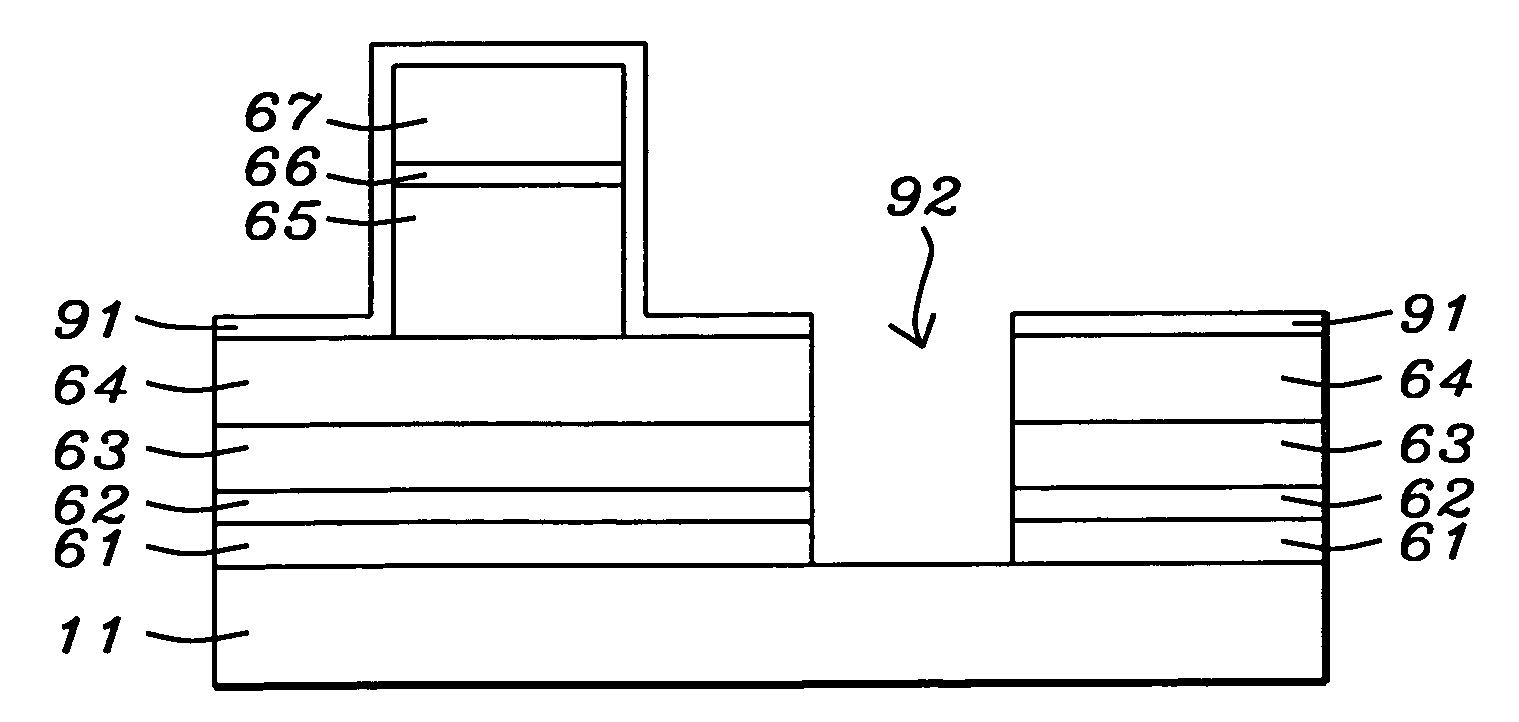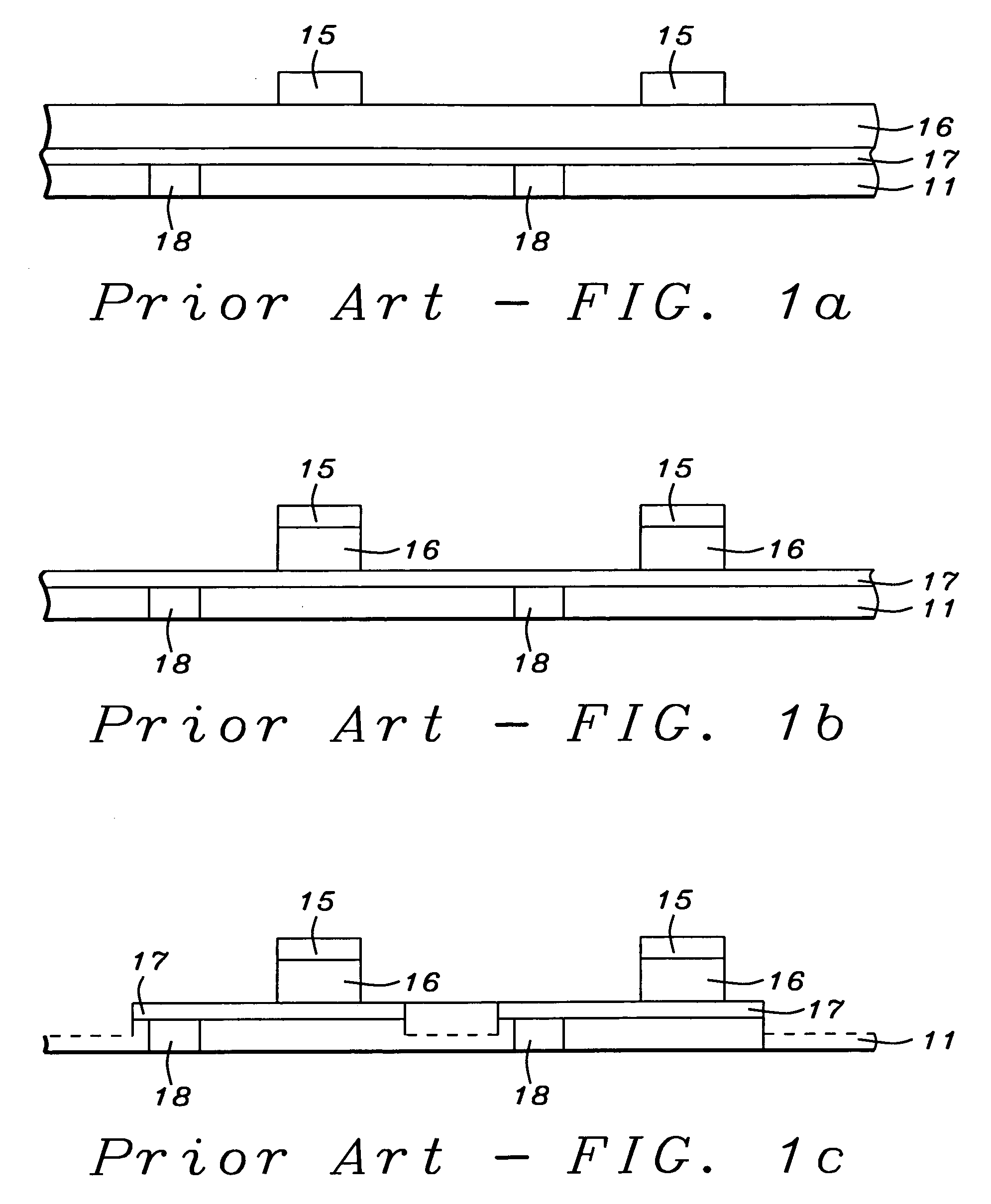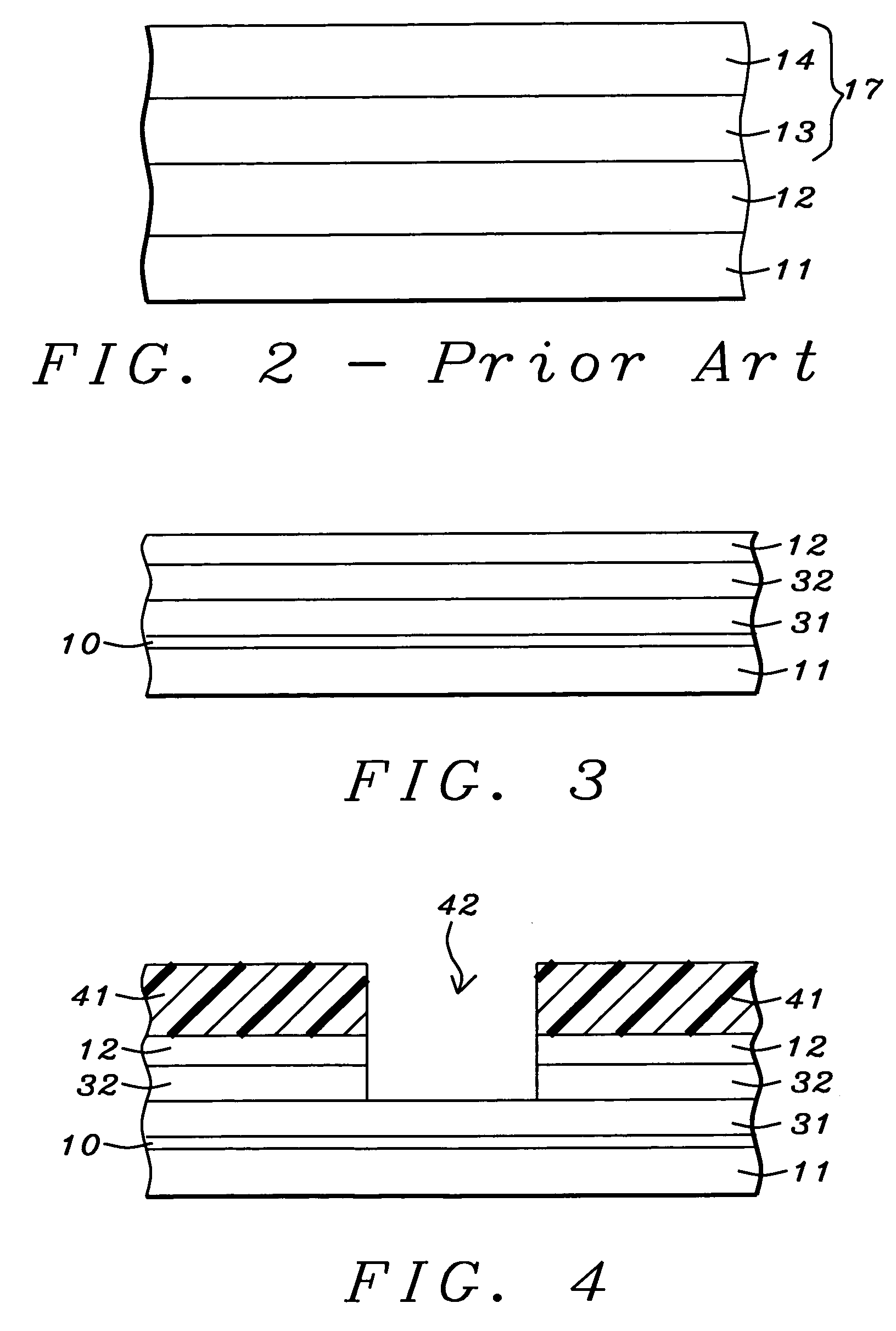Bottom electrode for MRAM device and method to fabricate it
a technology of mram device and bottom electrode, which is applied in the direction of magnetic field-controlled resistors, digital storage, instruments, etc., can solve the problems of limiting the further reduction of line width, ic device cannot be made very high density, and electrical shorting problems, so as to minimize any possible surface damage to said substrate
- Summary
- Abstract
- Description
- Claims
- Application Information
AI Technical Summary
Benefits of technology
Problems solved by technology
Method used
Image
Examples
first embodiment
[0040]For the first embodiment, as an alternative to the use of NiCr as a ‘glue’ layer, a special treatment of the SiN substrate surface may be used instead:
Sputter-clean SiN / OSURu30 / α-Ta120 / TaN150
[0041]where OSL stands for oxygen surfactant layer. When OSL is used to treat the SiN surface, SiOxyNitride / RuO is formed at the SiN / Ru interface which then promotes good adhesion.
[0042]We now provide a description of the processes used to manufacture the two embodiments of the invention:
1st embodiment
1st Embodiment
[0043]Referring now to FIG. 3, the process starts with sputter cleaning of the surface of substrate layer 11, followed by depositing thereon layer of NiCr 10 onto which is deposited ruthenium layer 31 to a thickness between about 20 and 30 Angstroms. This is followed by the deposition, to a thickness between about 100 and 200 Angstroms, of alpha tantalum layer 32 (on ruthenium layer 31). Next, tantalum nitride layer 12 is deposited on layer of alpha tantalum 32 (to a thickness between about 100 and 150 Angstroms).
[0044]Now follows a key feature of the invention which is the process used to etch the bottom electrode sheet (layers 12 / 32 / 31 / 11) into individual bottom electrodes without, at the same time, significantly penetrating silicon nitride substrate 11. This is accomplished in two main steps, as follows:
[0045]Referring now to FIG. 4, photoresist mask 41, that defines the required multiple electrode shapes, is formed on the upper surface of layer 12. Then, a first re...
2nd embodiment
2nd Embodiment
[0047]Referring now to FIG. 6, the process of the 2nd embodiment starts with sputter cleaning of the surface of SiN substrate layer 11 onto which is deposited layer of tantalum nitride 61 to a thickness between about 20 and 30 Angstroms. This is immediately followed by the deposition (onto the top surface of 61) of layer 62 of NiCr to a thickness between about 20 and 30 Angstroms. Note that it is critical for the effectiveness of this embodiment that layers 61 and 62 always be used together. The motivation for this is the excellent adhesion of TaN to SiN, the excellent adhesion of NiCr to TaN, and the excellent adhesion of Ru to NiCr. Furthermore, NiCr is an effective seed layer for Ru so it also serves to minimize the resistivity of Ru layer 63.
[0048]Next, layer 63 of ruthenium is deposited on layer 62 and then alpha tantalum layer 64 is deposited on ruthenium layer 63. Layers 61-64 now constitute a base layer on which MTJ devices can be formed. Seen in FIG. 6 are pin...
PUM
| Property | Measurement | Unit |
|---|---|---|
| thickness | aaaaa | aaaaa |
| thickness | aaaaa | aaaaa |
| thickness | aaaaa | aaaaa |
Abstract
Description
Claims
Application Information
 Login to View More
Login to View More - R&D
- Intellectual Property
- Life Sciences
- Materials
- Tech Scout
- Unparalleled Data Quality
- Higher Quality Content
- 60% Fewer Hallucinations
Browse by: Latest US Patents, China's latest patents, Technical Efficacy Thesaurus, Application Domain, Technology Topic, Popular Technical Reports.
© 2025 PatSnap. All rights reserved.Legal|Privacy policy|Modern Slavery Act Transparency Statement|Sitemap|About US| Contact US: help@patsnap.com



